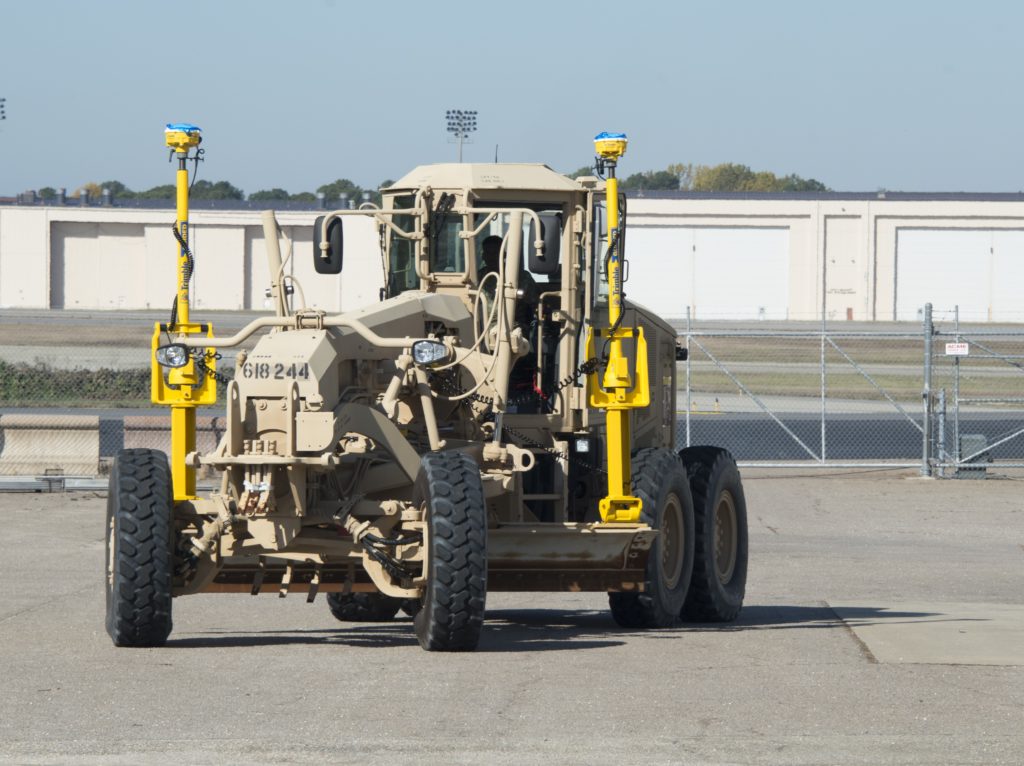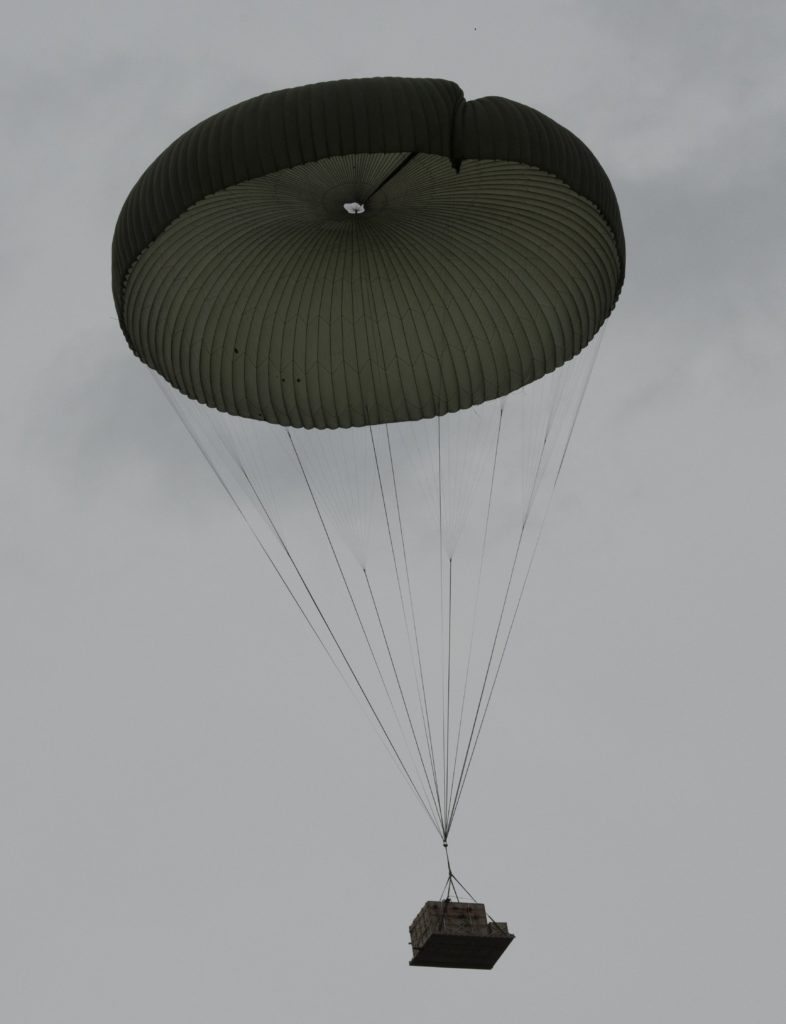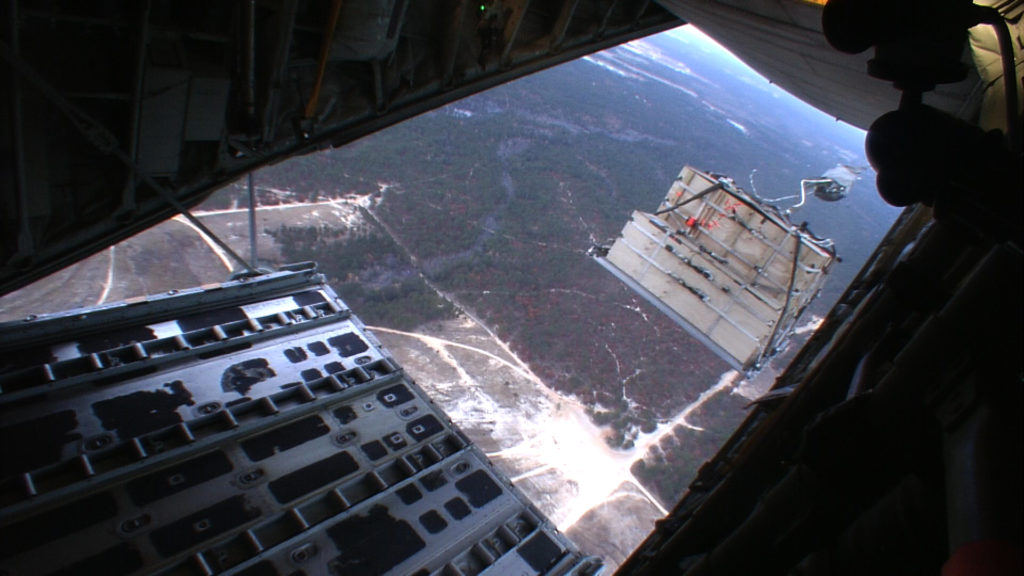
By Staff Sgt. James Bonnington, Airborne and Special Operations Test Directorate, U.S. Army Operational Test Command Public Affairs
FORT BRAGG, N.C. – Army Airborne Engineers will soon begin fielding digital systems that maximize their efficiency, increase situational awareness and potentially save lives during earth moving operations in hostile environments.
The Army’s new Enhanced Rapid Airfield Construction Capability (ERACC) will soon be supporting Enable Theater Access (ETA) operations, according to Mike Shelton, a test officer with the Airborne and Special Operations Test Directorate (ABNSOTD), U.S. Army Operational Test Command (USAOTC).
The ETA concept centers on rapidly deployable engineer assets, expanding the capabilities of aerial ports of embarkation/debarkation following forced entry operations.
“One of the primary missions of the Airborne engineer is to assess, repair and often improve airfields after mass tactical airborne assaults that are one of the primary missions of the Army’s Airborne forces,” Shelton said.
Fast repair of these airfields is vital to expanding operations.
“Receiving heavy equipment and weapons systems that are incapable of being delivered via parachute must have an improved landing zone,” said Shelton.
“Also, evacuating wounded and non-combatants and receiving supplies and humanitarian assistance in some instances, require engineers to improve runways.”

“ERACC Type II is a commercial off the shelf (COTS) system which is interoperable with, and enhances the efficacy of earth moving operations,” said Mike Tracy, a branch chief with ABNSOTD. “ERACC is compatible with a host of earth moving and grading vehicles.
“A 3-D display is a core capability used by the operator in the host machine,” continued Tracy. “This capability updates digital site design and progress more rapidly than previous construction methods.”
The 3-D displays also provides the operator with updated real-time project status, machine location tracking, and cut and fill information, without the use of grade stakes, Tracy said.
The ERACC Type II capability provides the host machine operator with in-cab visual positioning information including elevation and cross-slope data relative to site design.
“This technology is in use currently in civil and private engineering projects across the construction industry and can often shorten large scale projects by weeks,” said Shelton.
Shelton also explained that, from a Soldier safety aspect, the ERACC can assist individual equipment operators in avoiding “no dig” areas and previously surveyed areas which could contain unexploded ordinance (UXO).

“The technology is great at limiting exposure to long range observation and threat engagement,” Shelton said.
“The system supports forced entry operations and reduce airfield repair and construction times,” added Tracy.
Early in 2017, ABNSOTD began exploring methods to deliver the ERACC to engineers on the battlefield, in conjunction with the Program Executive Office Combat Service and Combat Support Systems and the Maneuver Center of Excellence.
Shelton said the purpose of the operational test using paratroopers was to collect data to evaluate the suitability and safety of the ERACC when delivered via aerial resupply.
One of the key earth movers slated to use ERACC is the Airborne 120 Grader System, but an obstacle of exploiting this capability with such a heavy airborne grader was its weight, according Shelton.
“It was clear another method of delivery would be required to support heavy engineer formations,” he said.
“Operational testing is about Soldiers,” said Col. Brad Mock, ABNSOTD director. “It is about making sure that the systems developed are effective in a Soldier’s hands and suitable for the environments in which Soldiers train and fight. Operational testing is USAOTC’s opportunity to contribute to readiness; anything less compromises the Army’s ability to provide the forces that fight and win the Nation’s wars.”
~~
About the U.S. Army Operational Test Command:
The U.S. Army Operational Test Command is based at West Fort Hood, Texas and its mission is about making sure that systems developed are effective in a Soldier’s hands and suitable for the environments in which Soldiers train and fight. Test units and their Soldiers provide feedback, by offering input to improve upon existing and future systems with which Soldiers will ultimately use to train and fight.
The Fort Bragg, N.C.-based Airborne and Special Operations Test Directorate plans, executes, and reports on operational tests and field experiments of Airborne and Special Operations Forces equipment, procedures, aerial delivery and air transportation systems in order to provide key operational data for the continued development and fielding of doctrine, systems or equipment to the Warfighter.
